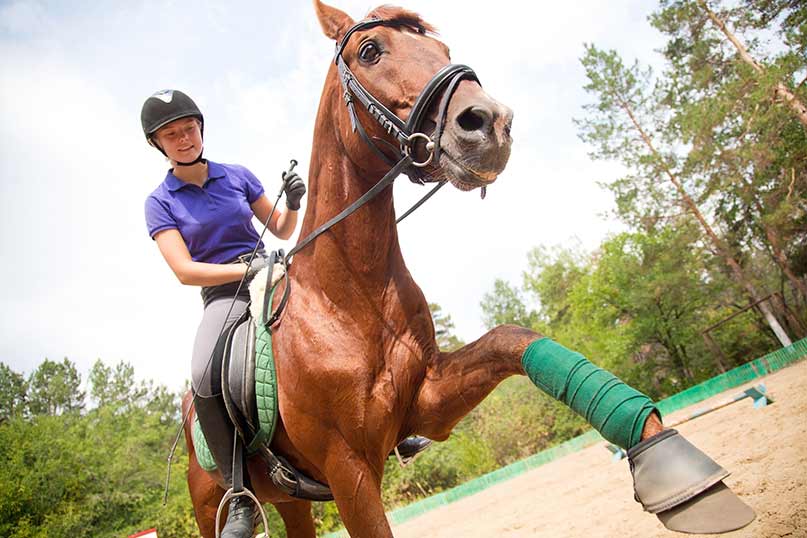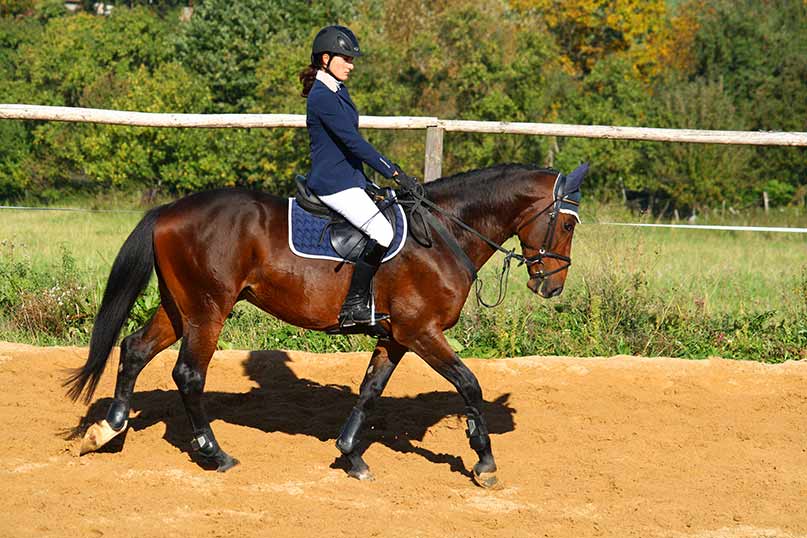
If your horse is out injured or you have stopped riding them for any reason for more than 3 months, all conditioning in your horse is essentially lost. You are essentially starting at zero. You have to be aware that no matter if the horse is injured or not, if they haven???t been exercised they won???t do a lot themselves. Horses tend to stand around all day eating, destroying all their previous fitness and conditioning.
Be mindful of weight gain in your horse as this will make it harder for them to tolerate exercise and could cause further damage to themselves. Along with weight gain, other factors such as the stiffness of joints and tendons may also impact the training schedule. This is why it is imperative to gradually ease your horse back in to training, even if they look healthy and ready to go.
A major problem that can arise from their first outing is an over willingness to get out there. This may be perceived as fitness and the horse will normally do more than he is physically conditioned to do. Don???t let their eagerness cloud your judgement as this can put a greater strain on the horses muscles, tendons, and joints and the horse will definitely feel the effects in a couple of days.
Grid Work
Grid work is a great tool/exercise for improving the overall fitness of your horse as well as increasing their gymnastic ability and agility. It is often used for young horses that are starting out their jumping, however it is a key aspect in rehabilitating injured horses and getting them back in to their usual routine. Remember to slowly introduce them to exercise by starting off with a walk and eventually getting in to a trot, watching for obvious signs of fatigue to know when to stop.

The best start off grid work is to have a couple of ground poles with a few feet between each one. Design it so that the poles are in line with the horse???s natural stride, making it easier and less strenuous on the horse. As your horse begins to get more and more comfortable with these ground bars, you can gradually increase the difficulty and make it more specific to your needs or the horse???s progression.
As your horse becomes more confident and fit, you can expand your grid work to include cross poles, bounces and doubles. Adding a few harder sections will mean that your horse will have to focus on their rhythm and balance while maintaining the ability to continuously complete the grid work. This can be through the introduction of a number of trotting poles roughly 1.3m apart (adding extras the more comfortable your horse gets).
Once your horses basic fitness is up to scratch, you can add in a few raised trotting poles that will mean the horse has to use themselves more and gain more suspension in their trot. Start with only raising one of the trotting poles and then gradually raise the others as the horse gets the hang of things. As the horse becomes fatigued, mistakes will be made and the raised poles may be clipped. Therefore you may have to either stop with the exercise or put them back on the ground ??? bringing them back to basics.
Over exercising your horse from the start runs the risk of causing further injury and putting them out for longer. This can lead to muscular aches that can manifest in to more serious injuries that can be hard to spot. Not only does it affect the horse physically, their mentality towards jumping and exercising will be diminished and make it harder to teach them or get them back to what they once were.
If you have any tips or tricks to help getting injured horses back in to work, let us know in the comments below.



